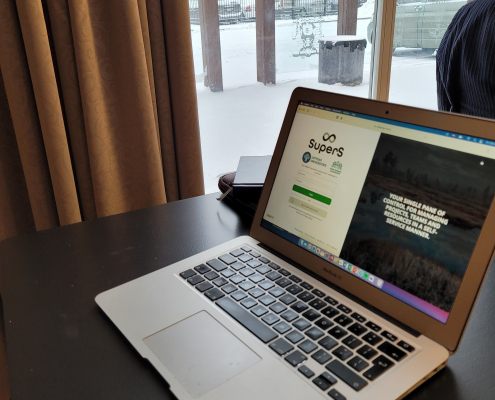Supercomputer Open platform already in testing mode
To make it easier and faster for customers to connect to the RTU supercomputer, with the support of the EuroCC-Latvia project, the Open platform or user-friendly interface has been developed. The Open platform is currently in testing mode.
Whereas before, to connect to the RTU HPC Centre supercomputer from one’s own computer, a user needed at least some knowledge of the Linux environment and had to use the command line, with the new easy-access platform, connecting to the RTU supercomputer is literally a few clicks away. One has to open the Open platform https://nohap.hpc-net.lv/login/ in the web browser of his/her computer, create a profile and ready – the user can start using the supercomputer via his/her web browser.
“We hope that we will be able to create a user-friendly environment where everyone – scientists, students, entrepreneurs and state or local government institutions – will be able to easily and easily access RTU HPC resources: data storage, computing nodes, software. The EuroCC project implemented by the HPC Centre, in which we are one of the partners together with the Institute of Computational Modelling at the University of Latvia, has made a significant contribution to the creation of the Open Platform so that users can request and use the supercomputer resources they need themselves,” explains Lauris Cikovskis, Head of the RTU HPC Centre.
In a way, the new Open Platform can be compared to an online shop, except that the supercomputer’s offer is what is put in the shopping basket. Already now, users will have access to several thematic platforms – Galax, which is mostly used by biomedical specialists, and JupyterHub, through which they can program in the Python programming language. In the future, it is planned to expand the thematic offer on the platform.
The Open Platform is planned to be available to a wider range of users in the first half of 2023.
Practical benefits for the HPC user
The Open Platform is developed using the open source Waldur platform. This platform has been developed by colleagues from the University of Tartu (Estonia), whose experience the RTU HPC Centre chose to adopt.
“Thanks to the Open Platform, it will be easier for RTU supercomputer users to connect to the supercomputer itself. Users will be able to choose how much of the supercomputer’s resources to use, what kind of software to work with. The software will be listed both by scope and by name. Anyone can already try out the examples of HPC applications developed by the EuroCC-Latvia project in different areas (demo-case) on their own computer. By connecting to a supercomputer via the Open Platform, you will be able to try them out on a supercomputer,” explains Atis Degro, developer of the Open Platform. The Open Platform will also instantly show how many resources have been consumed on the supercomputer and what the current costs are.
“We are already working on adding the LU supercomputer to the Open Platform. This will allow the user to choose which supercomputer resources to use. Currently, only the RTU HPC Centre supercomputer can be connected via the Open Platform,” says Atis Degro.
“National Open HPC Access Platform – https://nohap.hpc-net.lv/login/ – fast, easy, no additional knowledge required. Will be available to all users in the first half of 2023.
Kintija Bulava, EuroCC-Latvija.




